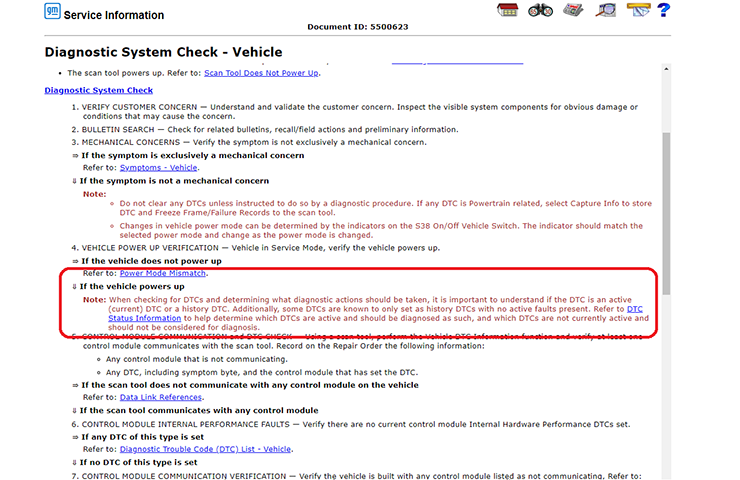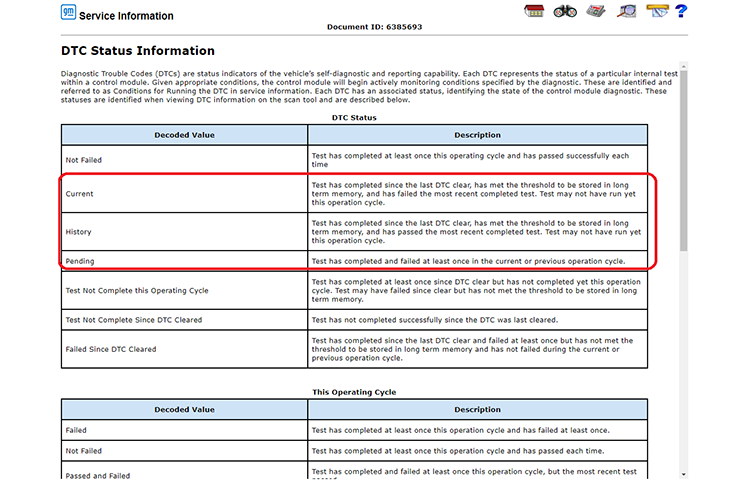During vehicle diagnosis, a key part of Strategy Based Diagnosis is to check for current and history DTCs. It’s important to understand DTC status, its relationship to diagnosing a vehicle and if the fault is currently present on the vehicle.
Each DTC represents the status of a particular internal test within a control module. Given appropriate conditions, the control module will begin actively monitoring conditions specified by the diagnostic. For history DTCs, the fault is not currently present on the vehicle. This information can be helpful in determining the root cause of a condition, but the history DTC by itself does not indicate a current issue with a component.
Service Bulletins
In the past, Bulletins have been released in the Service Information identifying certain DTCs set in history that could be ignored on certain vehicles with a particular condition. The Bulletins would address common misdiagnosis of some vehicle conditions or list DTCs set in history that were not related to the condition.
Starting with the 2024 model year, these types of Bulletins will no longer be published. Additional information has been added to some Service Information documents to help clarify DTC-related diagnosis.
For example, in the Diagnostic System Check – Vehicle document, under Vehicle Power Up Verification, the following information (Fig. 1) has been added:
Note: When checking for DTCs and determining what diagnostic actions should be taken, it is important to understand if the DTC is an active (current) DTC or a history DTC. Additionally, some DTCs are known to only set as history DTCs with no active faults present. Refer to DTC Status Information to help determine which DTCs are active and should be diagnosed as such, and which DTCs are not currently active and should not be considered for diagnosis.
 Fig. 1
Fig. 1
History DTCs
Diagnostic procedures are written only for an active fault with a current DTC. History DTCs related to the customer complaint may be used as a guide or indicator for replicating the condition that caused the DTC to set. (Fig. 2) Review the Conditions for Running the DTC in a DTC diagnostic procedure for help in recreating the conditions necessary for the DTC to run. Information within the DTC diagnostic procedure, such as the Fault Information table or Conditions for Setting the DTC, also may be helpful in recreating an intermittent DTC.
 Fig. 2
Fig. 2
For more information about current and history DTCs as well as the conditions for running the DTCs, refer to DTC Status Information in the appropriate Service Information.
– Thanks to Peter Joslyn and Mike Waszczenko


















